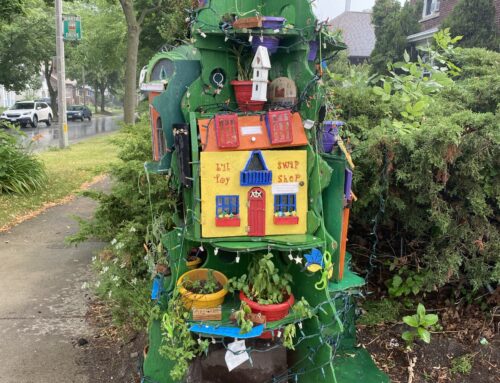For Black History Month this year, Near west Side partners would like to highlight historical moments that transpired right here in our very own neighborhood. These moments in time helped shape the society that we live in today, and were key to advancements for the civil rights of African-Americans in this country. Today the focus will be on the Fair Housing Marches that occurred in the Near West Side and over the 16th street Viaduct.
Constructed in 1894, the 16th street viaduct served to connect what is now the campus of Marquette University and the predominantly Polish south side of Milwaukee. Over the course of its life, the viaduct witnessed the evolution of Milwaukee, and the policies that have today given the city its reputation as the most segregated city in the country. During the mid-20th century, the real estate industry adopted a practice known as redlining. A practice in which residential areas in cities were mapped by their perceived risk for investment, lower risked areas were graded highly and color coded with green, higher risk areas were graded poorly and color coded with red. Consistent with the racist attitudes of the time, many of the appraisal questions were centered around the demographics that populated an area, and the resulting maps reflected the prejudice’s of of the evaluators. This process was overtly racist, and perfectly legal.
The maps created for the city of Milwaukee were predominantly graded as higher risk for investment due to its high population of African-Americans. With green grades reserved for areas that were at the time considered suburban and populated with white Americans. These practices resulted in banks refusing to lend money in areas that were predominantly populated with African-Americans, citing the high risk of investment for the area. This resulted in a lack of reinvestment in these areas, and declining infrastructure and housing stock in an already impoverished community. Middle-class and upper-class African-Americans who swelled in these areas were also denied mortgages from banks keeping them trapped in these redlined neighborhoods, while their white counterparts were able to receive mortgages from Banks and move throughout the city. The practice of redlining was one of the leading factors creating the racial distribution of Milwaukee, giving the 16th St viaduct its nickname, “The Mason-Dixon Line” of Milwaukee.
In the 1960s while the Civil Rights Movement was gaining momentum across the county, groups in Milwaukee were working to address inequalities in their own communities. Groups like the Milwaukee United School Integration Committee (MUSIC) and the Milwaukee NAACP Youth Council led by Father James Groppi wanted to address the housing inequalities that existed in the city due to redlining. At the same time Vel Phillips became the first African-American and first woman to be elected Alderwoman to the Milwaukee Common Council. Phillips also set her eyes on the inequalities in the housing market of her city.
To hear about how the Civil Rights Movement influenced protests in Milwaukee listen to the commentary below by Marquette University History Professor Dr. Robert Smith.
At first Phillips and other groups advocated for fair housing legislature, but it very quickly became all too apparent that they would be met with staunch opposition. It soon became clear that organized demonstrations would be necessary if these groups wished to see fairer housing regulations.
To hear about the the roots of the Fair Housing Marches in Milwaukee listen to the commentary below by local historian Adam Carr.
In the early summer of 1967, the NAACP Youth Council began to organize pickets outside of the homes of aldermen that voted against fair housing legislation. These demonstrations soon turned to city wide protests however. On the night of August 28, 1967, the NAACP Youth Council led a group of protestors that included Vel Phillips across the 16th St viaduct to the predominantly white south side. Adhering to Dr. King’s words about non-violence the protests were peaceful, until they met a group of counter-protestors on the other side of the bridge who hurled insults, bricks, bottles, and whatever else they could lay their hands on at them.
In the bloody aftermath James Groppi announced in a new conference that the marches would continue the following night. True to his word, Groppi and an even larger crowd marched across the 16th St viaduct the following evening where they were met by a mob of 13,000 counter-protestors once again. Even in the face of a larger and more hostile crowd, the protesters were unwavered in their determination. This determination remained unwavered for the next 200 consecutive days, contributing to the passage of Civil Rights laws in 1968.



